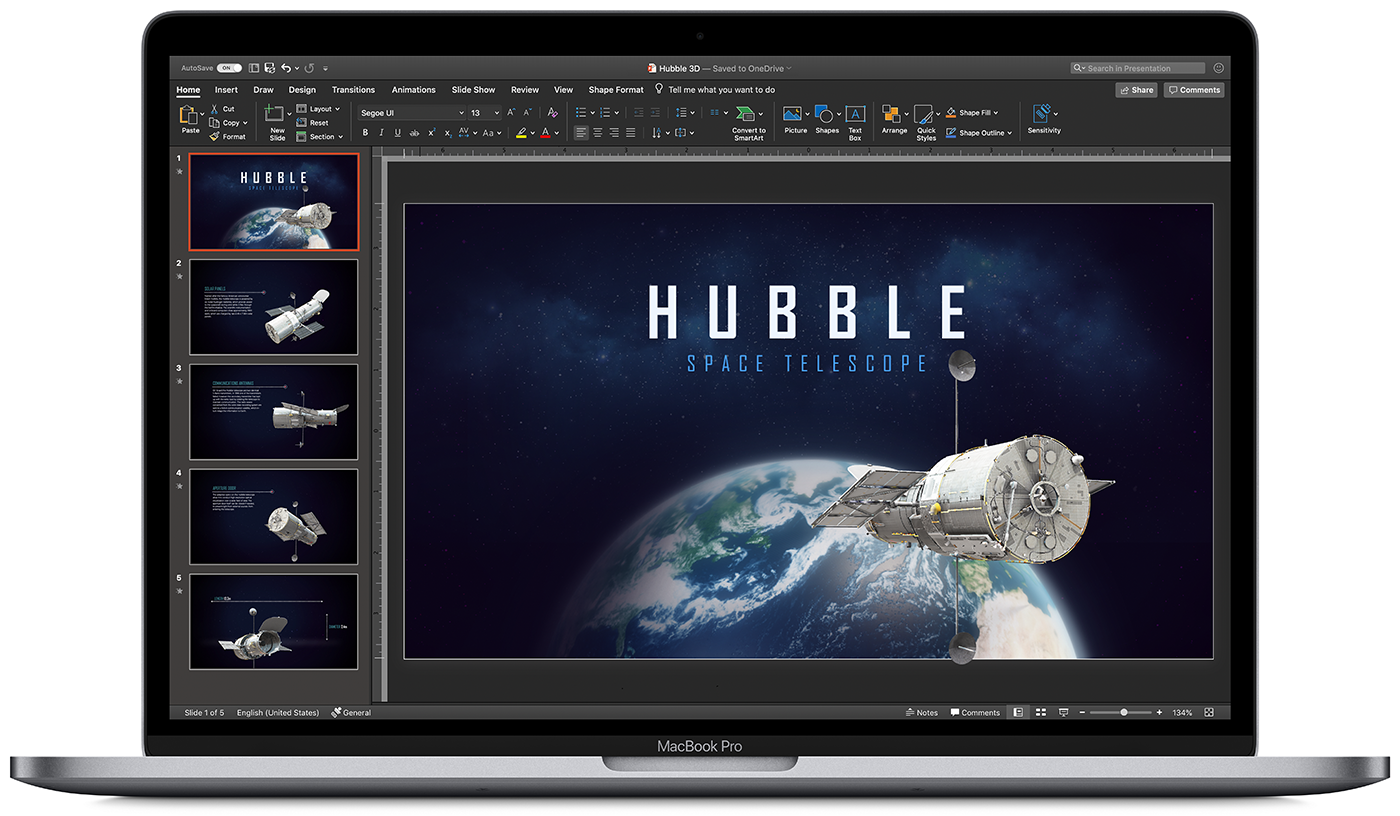Microsoft Office, or simply Office, is a family of client software, server software, and services developed by Microsoft.It was first announced by Bill Gates on August 1, 1988, at COMDEX in Las Vegas.Initially a marketing term for an office suite (bundled set of productivity applications), the first version of Office contained Microsoft Word, Microsoft Excel, and Microsoft PowerPoint. SoftMaker Office 2021 PRO - create word documents, spreadsheets and presentations - software for Windows 10 / 8 / 7 and MAC - compatible with Microsoft Office Word, Excel and PowerPoint - for 5 PCs. By Markt + Technik. 5.0 out of 5 stars 1. DVD-ROM $99.99 $ 99. Microsoft’s last full version of Office for the Mac came out in 2010, so it’s been a while since the product was fully revamped for users. The Mac platform and Office have changed since then, and via public betas and feedback, Microsoft finally has an Office product that users can appreciate.
Start quickly with the most recent versions of Word, Excel, PowerPoint, Outlook, OneNote and OneDrive —combining the familiarity of Office and the unique Mac features you love. Work online or offline, on your own or with others in real time—whatever works for what you’re doing.
The last offices, or laying out, is the procedures performed, usually by a nurse, to the body of a dead person shortly after death has been confirmed.[1] They can vary between hospitals and between cultures.
Name[edit]
The Last Office For Macbook
The word 'offices' is related to the original Latin, in which officium means 'service, duty, business'.[2] Hence these are the 'last duties' carried out on the body.
Aims[edit]
- To prepare the deceased for the mortuary (a funeral home or morgue), respecting their cultural beliefs
- To comply with legislation, in particular where the death of a patient requires the involvement of a Procurator Fiscal aka. Coroner
- To minimise any risk of cross-infection to relative, health care worker or persons who may need to handle the deceased
Procedure[edit]
Often the body of the deceased is left for up to an hour as a mark of respect. The procedure then typically includes the following steps, though they can vary according to an institution's preferred practices:
- Removal of jewellery unless requested otherwise by the deceased's family. If left on it must be documented in the patient's property list.
- Wounds, including pressure sores, should be covered with a waterproof dressing. Tube insertion points should be padded with gauze and tape to avoid purging.
- The patient is laid on his/her back with arms by their side (unless religious customs demand otherwise). Eyelids are closed.
- The jaw is often supported with a pillow or cervical collar.
- Dentures should be left in place, unless inappropriate.
- The bladder is drained by applying pressure on the lower abdomen. Orifices are blocked only if leakage of body fluid is evident.
- The body is then washed and dried, the mouth cleaned and the face shaved.
- An identification bracelet is put on the ankle detailing: the name of the patient; date of birth; date and time of death; name of ward (if patient died in hospital); patient identification number.
- The body is dressed in a simple garment or wrapped in a shroud. An identification label duplicating the above information is pinned to the wrap or shroud.
- A stretcher drawsheet is placed under the body to enable removal to a trolley for transportation to the morgue. These trolleys may often be disguised to resemble laundry carts if transportation has to pass through areas where members of the public may be present.
Bathing the dead[edit]
Washing the body of a dead person, sometimes as part of a religiousritual, is a customary funerary practice in several cultures. It was delegated to professionals in ancient Egypt, ancient Rome, by well-off Victorians, and continues so in modern America, but was traditionally performed by 'family, friends, and neighbors.'[4]
Judaism[edit]
It is part of traditional Jewish burial rites.[5]
During the Inquisition in Spain, bodies undergoing preparation for burial were sometimes scrutinized for signs that they had been washed, since this was seen as a marker of secret Jewish practice (crypto-Judaism).[6]
Buddhism and Hinduism[edit]
Office For The Mac
Bathing of the dead, known as yukan, is also found in Buddhism.[7] It is also found in Hinduism.[8]
Islam[edit]
It is a religious practice in Islam, where the body is washed by members of the dead person's family.[9] When possible, three washings are performed: first with water infused with plum leaves, then with water infused with camphor, and lastly with purified water.[10]
The washing is usually performed by others of the same gender, although Islamic Hausa people permit spouses to wash each other's bodies.[11]
In West Africa[edit]
Funerary bathing is performed in traditional funerals in some countries in West Africa. The ritual washing of the dead is believed to be one of the factors which resulted in the rapid spread of Ebola virus in Guinea, Liberia and Sierra Leone in 2014.[12]
Cultural references[edit]
Antigone speaks of washing the dead in accordance with the Greek custom, although she was limited to pouring water on the body of her brother Polyneikes.[13]
The custom of bathing the dead has been depicted in a number of films. In the 1995 film Braveheart, a young William Wallace watches as women bathe the bodies of his father and brother, who were killed in battle against English troops during the 13th century. The 2009 film The White Ribbon depicts the washing of a deceased housewife in a Northern German village just before World War I. In the film A Midnight Clear (1992), set in the Battle of the Ardennes in World War II, a small group of soldiers are able to take a brief respite from the war when they procure a bath tub and heat up some water. After all have bathed, they wash the body of a comrade who was recently killed while trying to help a unit of German soldiers.

An episode of the HBO series Six Feet Under shows Nate Fisher's body being 'slowly and methodically' washed by his mother and brother.[14]
See also[edit]
References[edit]
- ^http://bereavementsupport.co.uk/how-will-the-person-be-cared-for-immediately-after-they-have-died/the-person-has-died-in-hospital/
- ^Online Etymology Dictionary
- ^Rana, D., & Upton, D. (2009). Psychology for nurses. Essex, UK: Pearson
- ^Christine Quigley (1 January 2005). The Corpse: A History. McFarland. pp. 52–53. ISBN978-0-7864-2449-8.
- ^Paul Vitello (December 12, 2010). 'Reviving a Ritual of Tending to the Dead'. The New York Times.
- ^Carlos M. N. Eire (25 July 2002). From Madrid to Purgatory: The Art and Craft of Dying in Sixteenth-Century Spain. Cambridge University Press. p. 86. ISBN978-0-521-52942-6.
- ^Bryant, Clifton D., ed. (2003). Handbook of Death and Dying. Thousand Oaks, California: Sage Publications. p. 664.
- ^Klaus K. Klostermaier (10 March 2010). A Survey of Hinduism: Third Edition. SUNY Press. p. 153. ISBN978-0-7914-8011-3.
- ^Reshma Memon Yaqub (March 21, 2010). 'The Washing: In the Muslim custom of bathing the dead, she found a deep sense of reward -- and shaved off 40 sins'. The Washington Post.
- ^Mercedes Bern-Klug (13 August 2013). Transforming Palliative Care in Nursing Homes: The Social Work Role. Columbia University Press. p. 262. ISBN978-0-231-50707-3.
- ^Suad Joseph; Afsāna Naǧmābādī (2003). Encyclopedia of Women & Islamic Cultures: Family, Body, Sexuality And Health. BRILL. p. 125. ISBN90-04-12819-0.
- ^Mary Beth Griggs (July 31, 2014). 'The Difficulty of Burying Ebola's Victims'. Smithsonian.com.
- ^Reginald Gibbons (26 April 2003). Antigone. Oxford University Press. p. 186. ISBN978-0-19-984020-5.
- ^Katherine Ashenburg (8 April 2014). The Dirt on Clean: An Unsanitized History. Farrar, Straus and Giroux. pp. 9–10. ISBN978-1-4668-6776-5.
Overview

The Microsoft Office for Mac option 'Disable all macros without notification' enables XLM macros without prompting, which can allow a remote, unauthenticated attacker to execute arbitrary code on a vulnerable system.
Description
XLM macros Up to and including Microsoft Excel 4.0, a macro format called XLM was available. XLM macros predate the VBA macros that are more common with modern Microsoft Office systems, however current Microsoft Office versions still support XLM macros. |
Impact
By convincing a user to open specially-crafted Microsoft Excel content on a Mac that has 'Disable all macros without notification' enabled, a remote, unauthenticated attacker may be able to execute arbitrary code with privileges of the user running Excel. |
Solution
Apply an update |
Block SYLK files at email and web gateways |
Vendor Information
Microsoft Affected
Notified: October 31, 2019 Updated: November 12, 2019
Status
Affected
Vendor Statement
We have not received a statement from the vendor.
Vendor Information
We are not aware of further vendor information regarding this vulnerability.
Vendor References
CVSS Metrics
| Group | Score | Vector |
|---|---|---|
| Base | 6.8 | AV:N/AC:M/Au:N/C:P/I:P/A:P |
| Temporal | 5.8 | E:POC/RL:W/RC:C |
| Environmental | 4.4 | CDP:ND/TD:M/CR:ND/IR:ND/AR:ND |

References
Acknowledgements
This issue was reported by Will Dormann of the CERT/CC.
This document was written by Will Dormann.
Other Information
| CVE IDs: | CVE-2019-1457 |
| Date Public: | 2019-10-31 |
| Date First Published: | 2019-11-01 |
| Date Last Updated: | 2019-11-15 12:51 UTC |
| Document Revision: | 38 |
